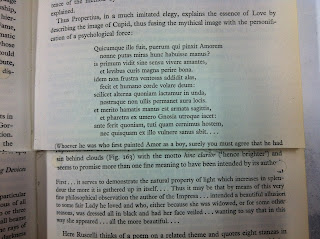I interacted with the book, attempting to turn the pages, looking, feeling, holding and exploring previous interventions, attempting to guess who had intervened with which element of the book. I found this exploration engaging and pleasurable, the deconstruction of formality within the book was liberating. I viewed the blog to establish the books progression and then went back to the book to reflect. I found the images within the book dull, as they were black and white. What is the book is about? ‘Studies in the art of the Renaissance.’ The Renaissance was influence by the rediscovery of classical art and culture, the irony being that Greek and Roman sculpture used to be painted. This knowledge established the starting point for my intervention with the context of the book.
Reconstructions of how these sculptures originally appeared
The context of objects and images change when they are without colour, my first thought was to paint the images in the book, as in ‘colorization’. I wonder if classical sculpture had still been painted when it was discovered, what impact would it have on Western art today.
Instead I stole from the internet, printed and clumsily stuck together images of Raphael and John Ruskin. I collected audio, cut and transformed it in to a recording from Tate modern website.
Audio:
Audio:
‘Pre-Raphaelite
Inspired by theories of John Ruskin who urged artists to 'go to nature'.
The name referred to their opposition to Royal Academy’s promotion of Renaissance master Raphael as ideal artist.’
TATE Glossary, Pre-Raphaelite
I crudely married together eclectic imagery of Raphael, John Ruskin and audio that I edited, verbalized and recorded from the Tate modern website, embedding sound within the book. My intervention attempts to lower the cultural status of the book, through pilfering the design format from pop culture. I put the gloves in an envelope, making them unusable, as I think the feel of the book is an important part of exploring. The envelope is with the book and can be opened….
I hope you have fun with my intervention, battery permitting! :)






















